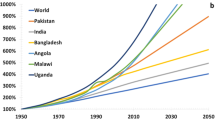Abstract
The importance of water in our lives and for our sustenance cannot be stressed enough. It is a proven fact that the freshwater on our planet earth is only 2.5% of the total available water resources. Two thousand nineteen statistics on water scarcity state that 25% of the world population is facing water scarcity, making it one out of every five people. Grave and current issues like climate change, population explosion, urbanization blowing out of proportion in comparison to the services provided, and finally rapidly growing industrialization have made water into a scarce and valuable commodity. Growing demands on the use of water have resulted in a drop in its quality and capacity to self-cleanse.
Water is one of the most crucial and significant components of national development planning in the twenty-first century. Realizing the importance of water, the United Nations declared that safe water must be inexpensive and easy to get for everyone by 2030. It has made this goal a part of the 17 sustainable development goals that must be achieved by 2030 by 193 member nations of the United Nations per their pledge (Population by Country, https://www.worldometers.info/world-population/population-by-country/, 2020). This is possible when every nation focuses on the legitimate and appropriate management of the limited water resource because it is crucial to ensure food security and resolve growing conflicts due to water scarcity. Hence, the water policy of any nation should recognize and adequately address the challenges faced by the world in the present and the future.
This challenge is getting tough day by day as the world population has touched the 7.7 billion people mark recently, and India’s population has increased to 1.36 billion (Population by Country-2020). India has a 54% urban population of the total population in the world. There was a drastic increase in the international urban population, which went up to 54% from 30% (1950) in 2015. As per the estimates, it is expected to increase to 68% of the total world population’s urban population by 2050. The issues mentioned earlier have been established to be the major cause in predicting an increase of 2.5 billion in urban population by 2050. Asia and Africa would be the leaders in the major problem of population crisis by 90% approximately (https://www.un.org/development/desa/en/news/population/2018-revision-of-world-urbanization-prospects.html. Retrieved 27 April 2020).
India has 4% share of the earth’s land area which is highly disproportionate to its 17.71 population. The United Nations has reported that it is on the edge of an urban revolution based on the statistical prediction of its population to reach six billion by 2031. So, India will have about 40% of the urban population by 2031 (First Post) (Firstpost, Sunday December 1, 2019. Retrieved February 1, 2020, 2019).
The increase in urban population has created numerous problems for the Government and private organizations in dealing with the provisions of essential services to the people. The most severe challenge for urban planners is to tackle the impact of disasters. They have to increase and ultimately optimize disaster risk resilience.
Similar content being viewed by others
References
chrome-extension://efaidnbmnnnibpcajpcglclefindmkaj/, https://www.wef.org/globalassets/assets-wef/direct-download-library/public/03%2D%2D-resources/wsec-2016-tr-002-iws-smart-start%2D%2D-final.pdf. Retrieved October 29, 2022.
Firstpost, Sunday December 1, 2019. Retrieved February 1, 2020.
Government of India. (2012). National water policy (p. 1). New Delhi.
http://nwm.gov.in/?q=new-initiatives. Accessed April 30, 2020
http://smartcities.gov.in/content/innerpage/smart-city-features.php. Accessed October 16, 2020
Jha, A. K., et al. (2013). Building urban resilience-principles, tools and practice (p. 11). The World Bank.
Population by Country. (2020). https://www.worldometers.info/world-population/population-by-country/. Retrieved April 27, 2020.
The World Count. (2020). https://www.theworldcounts.com/challenges/planet-earth/freshwater/deaths-from-dirty-water. Retrieved April 28, 2020.
Author information
Authors and Affiliations
Editor information
Editors and Affiliations
Section Editor information
Rights and permissions
Copyright information
© 2023 Springer Nature Singapore Pte Ltd.
About this entry
Cite this entry
Mahajan, S.K., Mahajan, A.P. (2023). Sustainable Strategies for Conservation of Water Resources: A Critique. In: Singh, A. (eds) International Handbook of Disaster Research. Springer, Singapore. https://doi.org/10.1007/978-981-19-8388-7_17
Download citation
DOI: https://doi.org/10.1007/978-981-19-8388-7_17
Published:
Publisher Name: Springer, Singapore
Print ISBN: 978-981-19-8387-0
Online ISBN: 978-981-19-8388-7
eBook Packages: Earth and Environmental ScienceReference Module Physical and Materials ScienceReference Module Earth and Environmental Sciences




